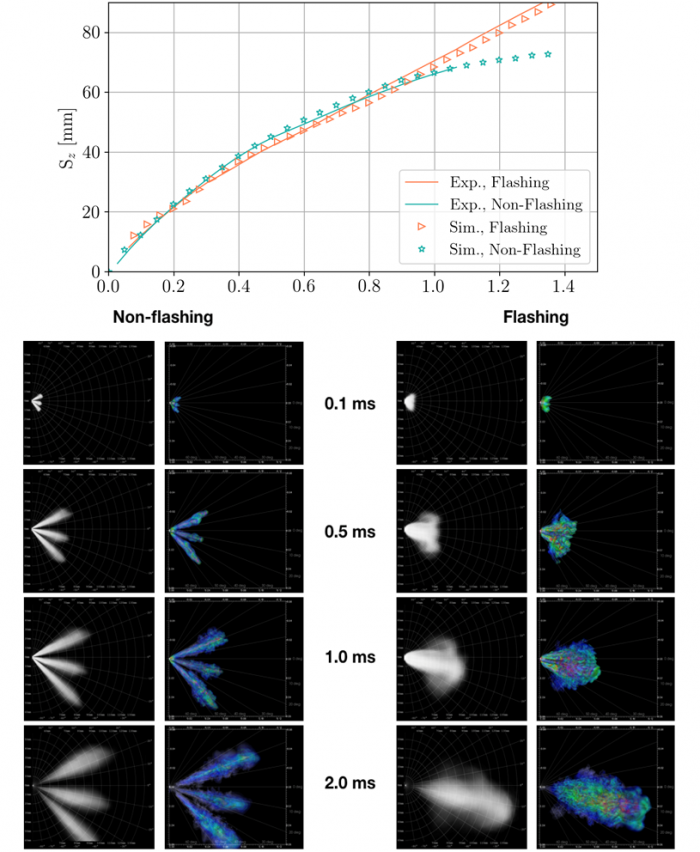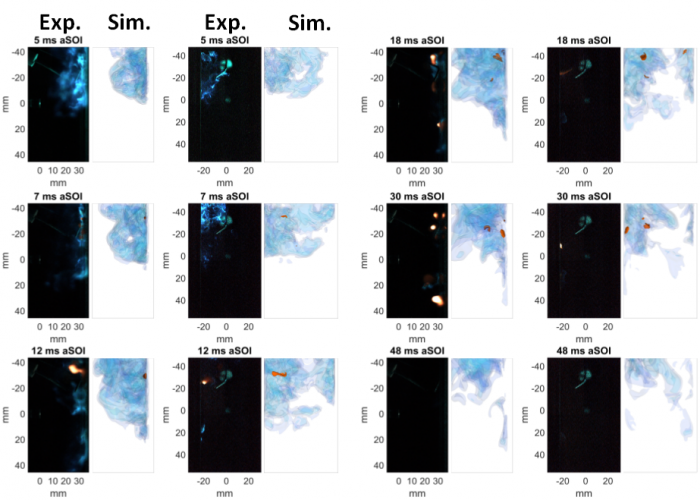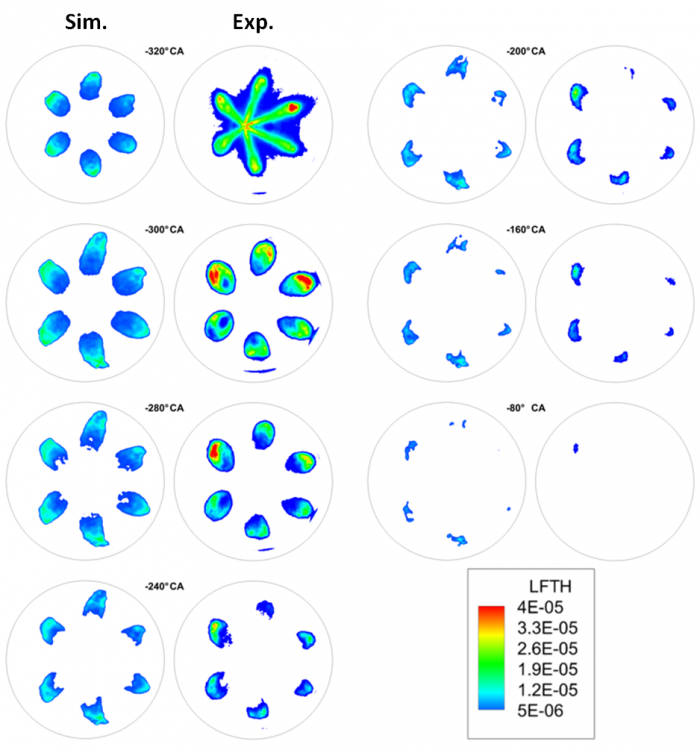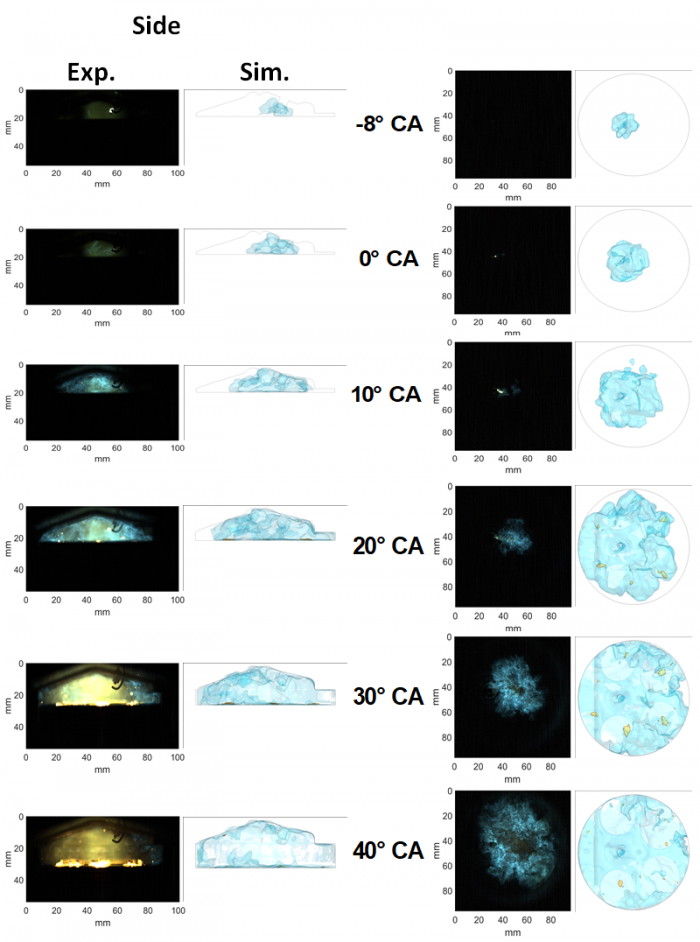Advanced combustion: LES 3D CRFD – Development and Knowledge Transfer
Aim & objectives
- Develop a numerical framework for the study of GDI spray, liquid film formation, combustion and subsequent soot dynamics
- Help to interpret the experimental results
- Provide additional insights into the Cause-Effect-Relationship of soot dynamics in GDI engines
- Validation by increasing complexity of studied physics and set-up
Follow the links below to find more results related to the LES 3D CRFD – development and knowledge transfers.
Deliverable:
D1.7 LES 3D CRFD development and knowledge transfer
The full poster and presentation
Constant Volume Vessel
Penetration and morphology comparison


Flow channel
Wall-film mass evolution comparison



Spray, flame and soot evolution: injection duration 0.5 ms.


Methodology
- LES for gas phase coupled with a Lagrangian approach for spray’s droplets
- Explicit definition of injected droplets (PDF for droplets diameter); KHRT and O’Rourke models for break-up and collision respectively
- Bai model for droplet-wall inteaction with transition criteria to liquid-film
- ECFM-3Z and Method of moments model for combustion and soot respectively
Optical and thermodynamic engine
Liquid film development and validation


Optical engine pressure comparison;

Thermodynamic engine pressure and heat release rate;

Optical engine flame and soot development

LES: Large Eddy Simulations
CRFD: Computational Reactive Fluid Dynamics
KHRT: Kelvin-Helmolz Rayleigh-Taylor
ECFM-3Z: Extended Coherent Flamelet Model – 3 Zones
Reference:
Frapolli, N., et al. Large Eddy Simulations and Tracer-LIF Diagnostics of Wall Film Dynamics in an Optically Accessible GDI Research Engine. No. 2019-24-0131. SAE Technical Paper, 2019.


